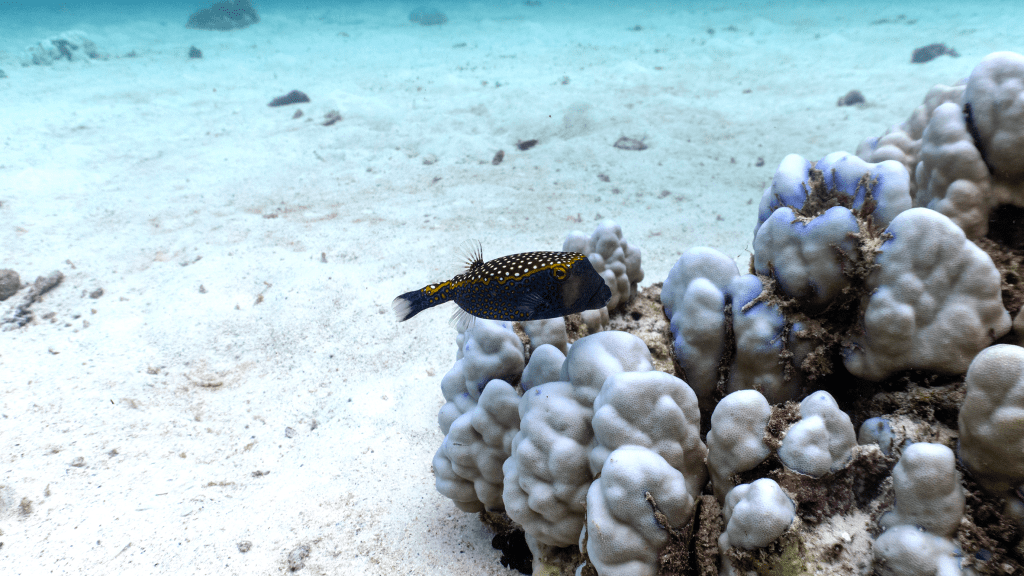White-spotted boxfish
White-spotted boxfish
The White-spotted boxfish (Ostracion meleagris), also known as the Spotted boxfish or Blue boxfish (referring to males), exhibits pronounced sexual dimorphism: males and females differ in coloration.
These fish are found in the Indo-Pacific region, primarily inhabiting lagoons and reefs at depths ranging from 1 to 30 meters. Adults can reach lengths of up to 25 cm. Their diet consists of sponges, worms, tunicates, and other small invertebrates.

Male coloration includes a blackish back with white spots, and bluish sides with bright yellowish bands and spots. Meanwhile, females and juveniles are dark brown or blackish with white spots.
Boxfish are closely related to pufferfish. While pufferfish often derive toxicity from symbiotic bacteria, boxfish utilize a toxic mucus (ostracitoxin), secreted from specialized skin cells, for defense. Their bright coloration serves as a warning of danger, a phenomenon called aposematism.

The scales of boxfish are fused into a hard, box-like carapace, leaving only the fins, tail, eyes, and mouth exposed. This provides them with additional protection. Boxfish move slowly, relying on their pectoral fins for propulsion. Like other boxfish, they quickly hide in shelters when threatened and often remain stationary, observing their surroundings.
They live in small harems, where one male attends to several females. Males are territorial and defend their territory from rivals. Spawning occurs high above the reef, where the male approaches the female and initiates the process.

During spawning, the male or female, sometimes both, emit a low-frequency humming sound that lasts for about 6 seconds. Another example is after the spawning process, when another male approaches a female perhaps to 'deter' her or disrupt the spawning process, the two males fight each other, sometimes creating an audible impact sound, and even emit a short buzzing sound.
